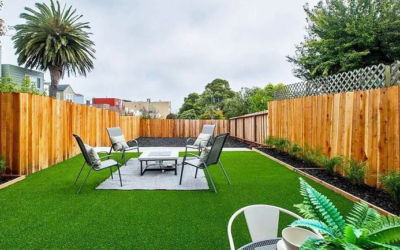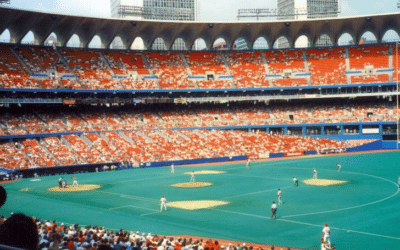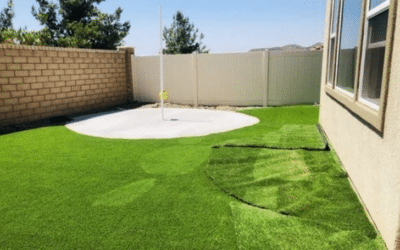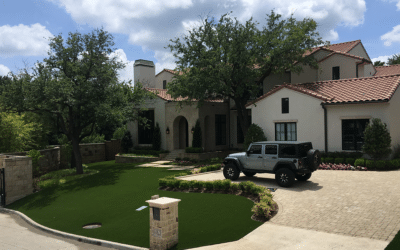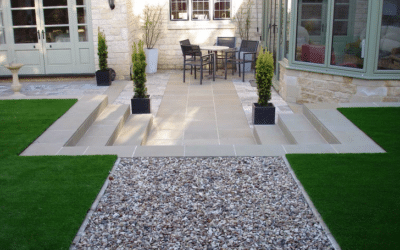Bryant–Denny Stadium is located on the campus of the University of Alabama (UA) in Tuscaloosa and is the home field of the Alabama Crimson Tide football team.
This iconic outdoor stadium is rapidly approaching its centenary year and has seen regular renovations over the previous decades.
Bryant-Denny Stadium has retained natural grass throughout its most recent history but is certainly no stranger to artificial grass. So far, the stadium has resisted the recent trend of the past few decades to switch to artificial grass—a move taken by many national college football teams due to its low maintenance and cost-saving benefits.
Here’s what you need to know about the playing surface at the Bryant-Denny Stadium and the comparison between artificial grass and natural grass at sports stadiums…
Does The Bryant-Denny Stadium Have Grass or Turf?
Bryant-Denny Stadium has a natural grass playing surface but it hasn’t always been that way.
The stadium was one of the early adopters of artificial grass, installing AstroTurf for the 1968 season. This decision was made largely because of the poor quality of the grass for playing football during the 1960s. The turf remained until 1991 when the university switched back to grass.
Grass being grass, it requires regular re-sodding. In July 2023, an entirely new grass field was laid at the stadium, with some significant improvements.
Alabama Crimson Tide’s current preference for real grass over the artificial variety has a caveat because synthetic turf is now used on the sidelines at the Bryant-Denny Stadium: a good example of the two types of surfaces working together to get the best of both worlds.
History of The Bryant-Denny Stadium
Bryant-Denny Stadium was originally called Denny Stadium when it first opened in 1929 on the site of Denny Field. This was in honor of the school’s long-serving president at the time.
The switch of name to Bryant-Denny was in 1975 when the decision was made to also honor longtime head coach and alumnus Paul “Bear” Bryant.
The stadium is the eighth largest in the U.S. and the tenth largest stadium in the world, boasting a seating capacity of just over 100,000.
Yet most of Alabama’s “home” football history from the 1920s through the 1980s didn’t actually take place at the Bryant-Denny Stadium. Birmingham’s Legion Field used to seat almost 20,000 more people than the Bryant-Denny and hosted the majority of the most important home games during that period.
Consequently, the Bryant-Denny Stadium wasn’t the venue most associated with the Crimson Tide until the late 1990s. Fast forward to the present day and the stadium is now considered one of the most feared in the country for opposition teams and holds 30,000 more people than Birmingham’s Legion Field, which now has an artificial turf playing surface.
Expansions in 2006, 2010, and 2019/2020, have produced the stadium you see now, which combines modern amenities and a traditional core. A good example of its modern ambiance is the state-of-the-art LED light system installed in 2019.
What Type of Grass Is Used At The Bryant-Denny Stadium?
The natural grass laid at Bryant-Denny Stadium is NorthBridge Bermudagrass except for the sidelines, which use artificial grass.
NorthBridge Bermudagrass has a fine texture and extreme sod strength that helps it stand up well to wear and tear. This grass is used in homes, golf, and commercial areas as well as on sports fields.
The latest version of the playing field surface at the Bryant-Denny Stadium was installed in July 2023 and was ready for the start of the season in September. This renovation, which ripped up the old surface, completely replaced the sod, installed a new vacuum-assisted drainage system, and added some soil-heating capabilities. It also added the synthetic turf sidelines.
This constituted the stadium’s most serious playing field renovation since the early 1990s.
Long football seasons are tough on playing surfaces and extensive maintenance is required to keep fields looking pristine and performing well all year round, Countless divots and compression of the grass can take a heavy toll on natural grass, especially after rainfall—which is one of the main reasons why most college football teams play their home football on synthetic turf.
Grass vs Turf In The SEC
Of the 14 schools in the Southeastern Conference, 12 play their home games on grass, including the Crimson Tide. Only the University of Missouri and the University of Kentucky play on artificial turf.
Nationwide, artificial turf is installed at 15 of the 28 NFL stadiums. At the college football level, the shift to turf is even more pronounced: 94 schools play home FBS football on artificial surfaces while 39 play on grass (compared with 75 schools twenty years ago).
Natural grass is often replaced with artificial grass if there are concerns over sunshine levels for healthy grass growth, high maintenance costs/water usage, and challenges with preparing an all-weather surface that is safe for players.
Pros and Cons of Artificial Turf At Sports Stadiums
The case for switching to artificial grass is stronger in some parts of the country than in others.
Alabama’s recent tradition of playing on natural grass is not set to end anytime soon, though some people wonder whether the installation of artificial grass sidelines is the first “nod” to the convenience of synthetic turf.
Let’s take a quick look at the pros and cons of real grass and artificial grass playing surfaces:
Main Pros of Artificial Turf
- Very low maintenance
- Highly cost-effective
- Natural look and appearance all year round
- Weather resistant (rain, sun, ice and snow)
- Increased playing time (fewer weather interruptions)
- Highly durable
- Drains well
- Little water required
- Few chemicals used
- No mud
Main Cons of Artificial Turf
- Higher installation price
- Some players prefer natural grass
- Some negative stigma remains about turf
- Requires infill, which may contain chemicals
- Hotter than grass
Main Pros of Real Grass
- Looks natural and lush when well-kept
- Gives out oxygen and filters pollution
- Absorbs heat well
- Absorbs moderate rainfall well
- Generally good traction
- Cushioned feel
Main Cons of Real Grass
- Sodding required
- High maintenance with mowing, edging, aeration, weed control, watering, etc.
- Sprinkler system and irrigation required
- Compaction and bare spots may occur
- Muddy in wet weather
- Heavy rainfall may lead to standing water
- May be damaged by icy conditions
Pro-Style Turf for Sports Fields
The switch to artificial grass for sports fields across the U.S. is largely because of its very low maintenance/water requirements, high durability, year-round performance, and cost savings when compared to natural grass.
If you’re considering sports turf for football, soccer or any other indoor or outdoor sport, discuss your options with an artificial grass professional.

